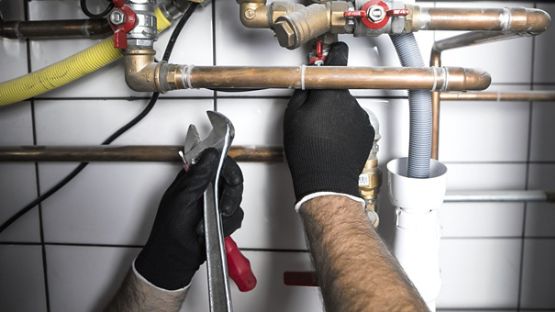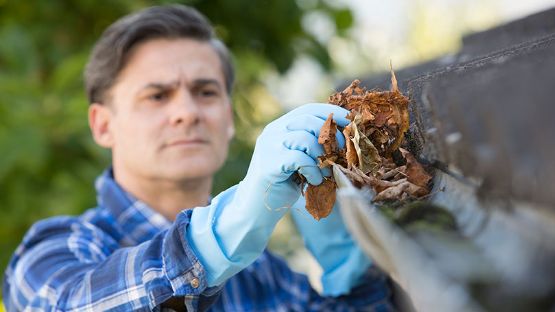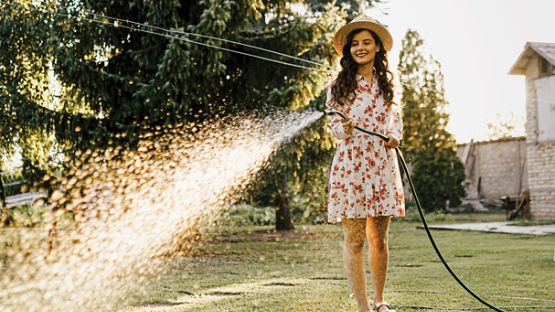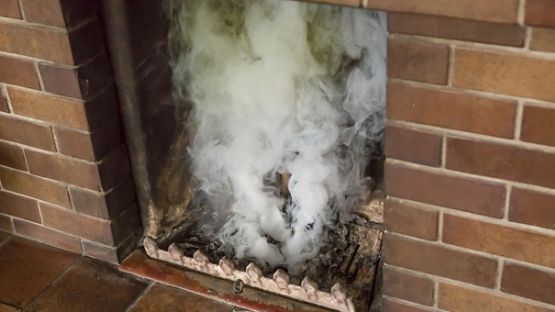Note: While the term "flooding" is often used colloquially to describe any instance of water entering a home, it's essential to understand the specific type of basement flooding we're discussing in this article. We are referring to "overland water," which involves water that comes from external sources such as rivers, heavy rainfall, or snowmelt that causes water to flow over the ground and into your home.
Most of us eagerly await the arrival of spring and the prospect of warmer days. However, for some homeowners in Canada, the spring thaw also brings the risk of water entry into your basement. Spring thaw can lead to significant water damage, mould growth and costly repairs if not properly managed.
According to the Canadian Government, the average cost of damage is over $40,000 in cases of basement seepage after snow melts. More than just expense, water damage can ruin your personal belongings, create a mess, require you to file an insurance claim and take significant time to clean up. So, prevention is your best bet. Good news: There are practical measures you can take to avoid water entering your basement and protect your home during the spring thaw.
Key takeaways
- Melting snow during spring thaw can overwhelm drainage systems and increase the risk of water entry into the basement, potentially leading to significant damage and high repair costs
- Preventative measures include ensuring proper property grading, cleaning gutters and downspouts, extending downspouts away from the foundation and removing snow from around your home
- Review your home insurance policy for overland water coverage, consider additional overland water coverage for extra protection, document preventative measures and maintain a home inventory to support insurance claims
What is spring thaw?
Spring thaw occurs when the accumulated snow and ice from winter begin to melt, leading to an increase in water flow. This process can overwhelm drainage systems, especially when the ground remains frozen and unable to absorb the excess water.
Basements are particularly vulnerable to overland water during spring thaw. The combination of melting snow, frozen ground and blocked drainage systems can lead to water seeping into basements, causing extensive damage.
According to Canadian Underwriter, water damage, including overland water, accounts for approximately 48 per cent of home insurance claims. With spring melt being a significant contributor, it’s important to take preventive measures.
Common causes of basement water entry during spring thaw
The primary cause of overland water during spring thaw is the rapid melting of large amounts of snow. This sudden influx of water can overwhelm drainage systems, leading to water entry.
There are some factors that can make this worse, including:
● Frozen ground: Even as temperatures rise, the ground may remain frozen, preventing water from being absorbed. This results in water pooling around the foundation, increasing the risk of seepage into basements.
● Blocked drainage: Ice and debris can block drainage paths, causing water to back up and flow toward the foundation of your home.
● Poor foundation: Cracks or weak spots in the basement foundation can allow water to seep in, leading to water entry.
Nine ways to prevent your basement water entry during the spring thaw
While Mother Nature can be a formidable foe, spring thaw can often be prevented with planning, proper maintenance, a few precautions and a little extra vigilance when the thaw starts. Here are some tips:
1. Look at your property grading
Property grading refers to the process of shaping the land around your home to ensure proper drainage and prevent water from accumulating around your foundation. Basically, the ground should slope away from your home’s foundation. This ensures that water also flows away from your house, reducing the risk of basement water entry.
Over time, soil can settle or erode, altering the slope. So, regular landscaping maintenance and adjustments may be necessary to ensure your slope remains effective.
2. Clean your gutters and downspouts regularly
Gutters and downspouts play an important role in directing rainwater and melting snow away from your roof and foundation. Clogged or damaged gutters and downspouts can cause water to overflow, leading to potential water entry and structural issues.
It’s generally recommended that you clean your gutters and downspouts at least twice a year, in the spring and fall. In areas with heavy tree cover or frequent storms, you may need to clean them more often.
Pro tip: Falls from ladders are among the most common and serious injuries associated with DIY gutter cleaning. Follow safety practices or leave the job to a professional.
3. Extend your downspouts
Downspouts are designed to channel rainwater and melting snow from the gutters into the ground. However, if the water is directed too close to your home's foundation, it can lead to water pooling around the base, increasing the risk of basement water entry and foundation damage.
Downspout extensions are flexible or rigid tubes that attach to the bottom of existing downspouts to direct water further away from your foundation. They can be made from materials like plastic, aluminum or steel. Extend downspouts to direct water at least three feet (one metre) away from the foundation. This prevents water from pooling near the house and seeping into the basement.
4. Remove snow around your home foundation and basement window wells
You may focus on removing snow from pathways, sidewalks and driveways, but did you know you should also regularly remove snow from around the foundation of your home? This reduces the amount of meltwater flowing towards your home. If snow has accumulated around basement window wells, clear those out regularly too. These simple steps can significantly decrease the risk of water entry into your basement.
5. Install a sump pump and a backup
Sump pumps effectively remove water that accumulates in the sump pit due to heavy rainfall, snowmelt or high groundwater levels, thus preventing basement water entry.
Ensure your sump pump is properly (and legally) installed to function effectively during the spring thaw. If you already have a sump pump, inspect it regularly to ensure it's working correctly and consider equipping it with a battery backup in case of power outages.
A step further: You can also consider installing a backup sump pump to ensure your basement remains dry even if the primary pump fails. Battery-operated or water-powered backup pumps are excellent options.
6. Seal cracks in your basement floors and walls
Cracks can allow water to seep into your home, leading to potential basement water entry, mould growth and other issues. Sealing cracks in your foundation, walls and floors is a critical aspect of home maintenance that helps prevent water infiltration, reduces energy loss and maintains structural integrity.
It’s important to use the appropriate materials and techniques for different types of cracks. Experts recommend that, apart from tiny shrinkage cracks, serious cracks be inspected by a professional contractor. It’s also important to reseal cracks regularly to maintain your repairs.
7. Waterproof the basement
Consider applying waterproof coatings and membranes to the basement walls and floor. This extra layer of protection can help keep water out during the spring thaw. The waterproofing process involves several methods:
- Exterior waterproofing typically includes excavation to apply sealants or coatings directly to foundation walls and installation of drainage systems, such as French drains, to redirect water away from the foundation.
- Interior waterproofing methods focus on managing water that enters the basement by installing drainage systems around the perimeter, applying waterproof sealants or coatings, plus utilizing sump pumps to remove accumulated water.
8. Check your septic or sewer system
Routine septic, sewer and drain maintenance can save you from the headache of sewage backups. Schedule regular inspections by a professional plumber to ensure your system is in good condition. Additionally, consider using enzyme-based cleaners to break down organic materials in your pipes.
Always be careful about what you flush or pour down your drains. Avoid flushing non-biodegradable items like wipes and disposable sanitary products. Dispose of grease, oils, food waste and debris in the trash.
9. Consider professional inspections and assessments
Professional inspectors bring expertise in identifying underlying issues that might not be immediately visible, such as:
- Structural weaknesses
- Inadequate drainage
- Hidden water sources
They utilize specialized tools and techniques to thoroughly assess the condition of your foundation, walls and drainage systems, providing a comprehensive evaluation of potential vulnerabilities.
Experts can also guide you in choosing the most effective waterproofing methods and ensure that any repairs or installations are performed correctly. Regular professional inspections not only help prevent minor issues from escalating into major problems but also enhance your home's overall resilience against water damage.
Insurance considerations
When managing overland water risks, it's important to consider your insurance coverage to ensure adequate protection and financial security.
First, review your home insurance policy to understand what is covered in case of water entry. Standard home insurance policies may exclude overland water coverage, so it's important to verify whether your current coverage includes protection against basement overland water and make necessary adjustments.
Evaluate the need for additional overland water coverage to provide extra peace of mind. Overland water coverage can offer comprehensive coverage for the sudden and accidental entrance of water through basement walls, foundation or floor from ground water or the rising water table, which is not typically covered by standard policies. This additional coverage can be invaluable in protecting your property and mitigating financial losses in the event of a overland water.
Other insurance tips:
- Documenting all preventative measures you take, such as waterproofing improvements and repairs, can be beneficial when filing an insurance claim
- Keeping detailed records and receipts can support your claim and potentially lead to reduced premiums
- Maintaining a home inventory of your possessions will help in documenting any losses accurately and ensuring that your claims process is as smooth as possible
Taking these steps not only safeguards your property but also enhances your preparedness for potential water-related incidents.
What to do if you experience a water entry into your basement
If, despite all your best efforts, the spring thaw is so big and quick that your basement still suffers from overland water, you'll need to make a claim on your insurance policy. Be sure to follow these steps:
- Assess and document all of the damage
- Call your insurance representative as soon as possible to file a claim
- Make a list of all damaged or destroyed items
- If possible, collect proofs of purchase, photos, receipts and warranties. Take photos of damaged items. If you can, keep them as evidence unless they pose a health or safety risk.
- Keep all receipts relating to the cleanup effort. If you've been displaced, keep all receipts for emergency and temporary living expenses and accommodations.
- Find out what living expenses you're entitled to according to your insurance policy and for what period of time you're entitled to keep claiming.
Above all, remember not to put yourself in danger if water enters your basement. Only go down to assess the damage when you are certain it is safe to do so, or when the relevant authorities have said it is safe for you to re-enter your property. Water damage is a frustrating issue to resolve, but keeping yourself and your family safe is priority number one.













